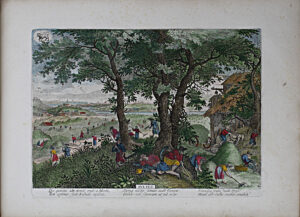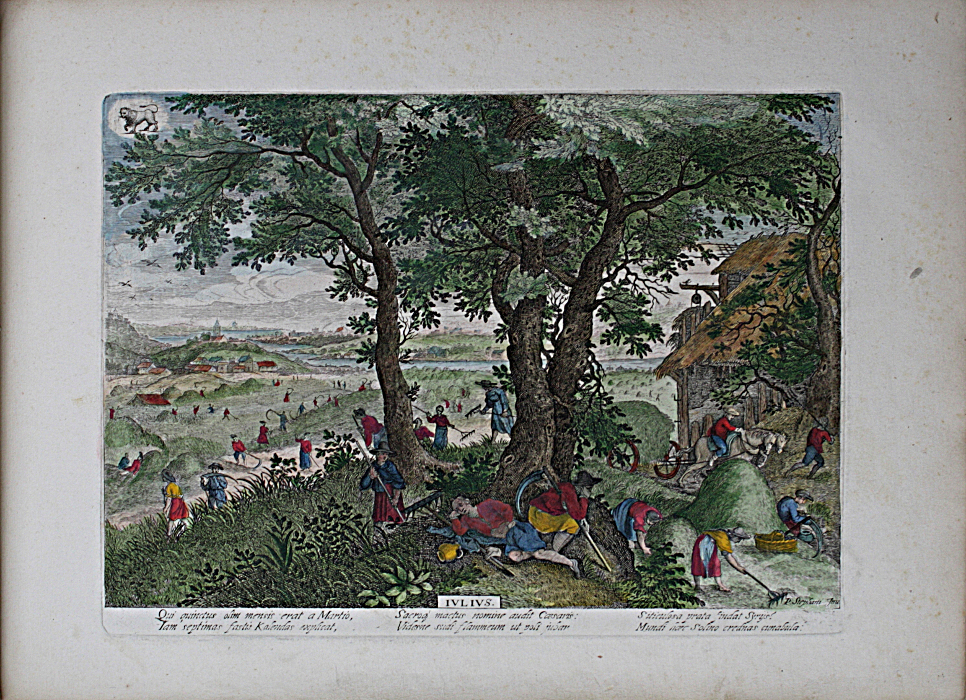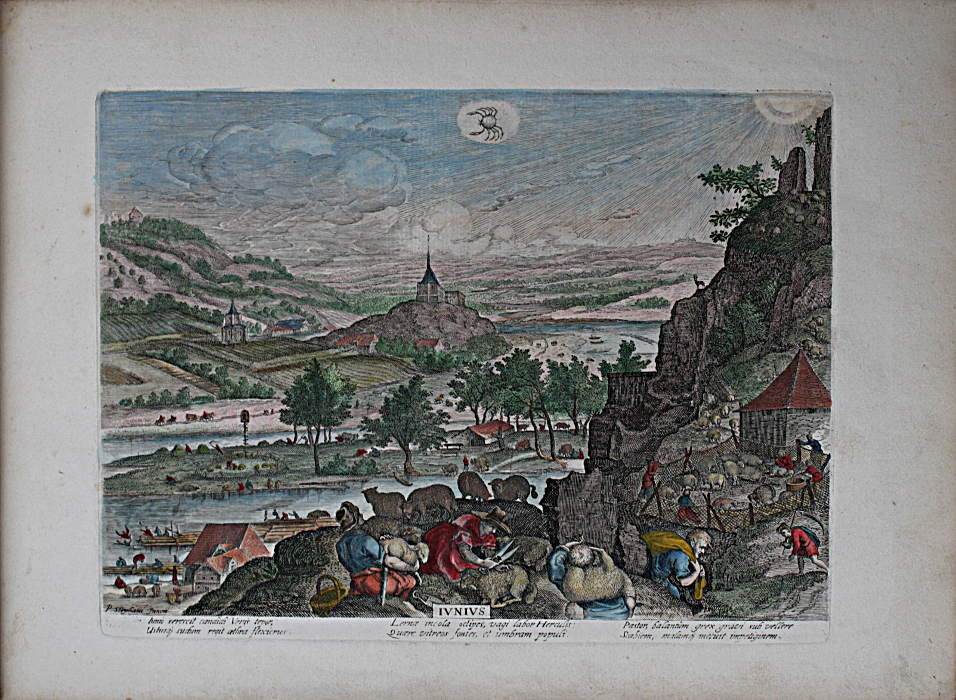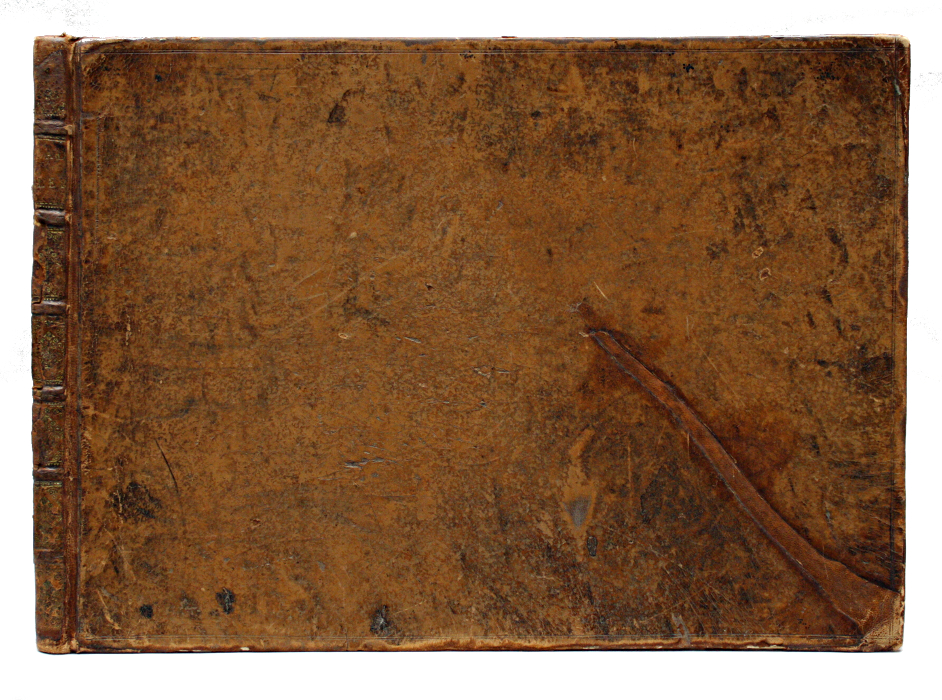SADELER, Gilles – STEVENS, Peeter II. The twelve months of the year. (Menses XII anni solaris). N.p.n.d, [not before 1607].
Oblong folio [395 x 285 mm] with 12 etchings. Bound in contemporary calf, spine ribbed.
A superb and complete suite of 12 engravings of the twelve months of the year, all contemporary hand-coloured with great delicacy and preserved in their contemporary binding. Thieme-B. XXXII, 25 and XXIX, 299.
The volume, preserved in its contemporary binding, contains the twelve contemporary hand-coloured copperplates. Wide-margined, each of them bears the name of a month, Petrus Stephani’s signature (Peeter II Stevens), a six Latin verses caption; Marco Sadeler’s address has been scratched out; this complete suite was bound without the title of the 1607 edition. Hollstein, XXI, 129-140.
This very fine suite engraved by Gilles Sadeler illustrates the twelve months of the year with the signs of the zodiac This set of plates was engraved by Gilles Sadeler after Peeter II Stevens to show the specific occupations of daily life according to the period of the year: the wood felling and picking in January, the gardening in April, the sheep shearing in June, the harvest in July, the fruit harvesting in September, the grape picking in October, etc.
Peeter II Stevens, called Stephani, landscape painter and engraver, born in Malines towards 1567, dead after 1624, was the elder son of Anton Stevens I and Anton II’s father; member of the guild of Malines in 1560. In 1589 he was freemason in Antwerp. He was a painter at the court of Rudolph II in Prague from 1590 to 1612 and appears under the name of Pet. Magzhan. He came back to the Netherlands after he went, towards 1600, to Venice and Roma. He was appointed again in Prague in 1624. Works of Peeter I and of Peeter II have never been perfectly differentiated, even by the archives. It seems that besides the war compositions or ordered portraits, he painted many landscapes.
« Gilles Sadeler was born in Antwerp, in 1570, and learnt the engraving from his uncles Jean and Raphaël, that he equalled soon. He went with them to Germany and to Italy and engraved in the latter country a significant number of engravings after the most famous masters from the Italian school. His affection for his uncles, who were treating him like a son, had to give up to the Emperor Rudolph’s entreaties who called him to his court, in Prague, and who granted him a pension when he arrived. He benefited from the same favours with the emperors Mathias and Ferdinand II, and it was during his stay in Prague that he engraved most of his engravings. He surpassed his uncles by his burin’s beauty and by a taste of engraving more analogous to the one of his originals. When the subject required it, he engraved the finest burin; but at the same time he knew how to use his tool in the largest and the more clever way, when he had to deal with some portraits or some pieces of history. His engraving was full of strength and vigour, and he obtained the greatest effects without pushing for the black. He enjoyed in his lifetime his full reputation and he received the title of paragon of the engraving […]. We can give the same praise to his landscapes, genre in which he may have no rivals. His work is considerable: we count thirty portraits; seventy-nine pieces from his own compositions; thirty-two historical subjects after various masters and eighty landscapes, including fifteen after Breughel de Velours, twenty-five after Rol. Savery and twenty-four after Pierre Stevens. »
Complete suites of contemporary hand-coloured engravings from the very beginning of the 17th century, well preserved in a contemporary binding, became extremely rare on the market.




